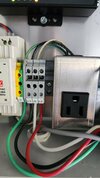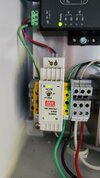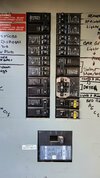I’m hoping someone can help me make sense of my charging options at home and hopefully find a way to charge faster than the 3 miles from a 5-15 outlet without having to spend thousands on rewiring or installation costs.
Right now I have solar and looking at two options:
The 5-20 outlet has its own breaker and is the only receptacle on the line with a 15 amp breaker. The breaker marked “Solar Monitor” is a double pole 20 amp breaker, but it connects to a 120v single outlet which splits to the monitoring device.
Is there a way to easy change out the 5-20 to a 6-20 given this configuration? If not, would it be possible to change the receptacle on the “Solar Monitor” line to a 6-20 instead?
Right now I have solar and looking at two options:
- Converting 5-20 outlet to 6-20 outlet
- Installing wall charger
The 5-20 outlet has its own breaker and is the only receptacle on the line with a 15 amp breaker. The breaker marked “Solar Monitor” is a double pole 20 amp breaker, but it connects to a 120v single outlet which splits to the monitoring device.
Is there a way to easy change out the 5-20 to a 6-20 given this configuration? If not, would it be possible to change the receptacle on the “Solar Monitor” line to a 6-20 instead?





